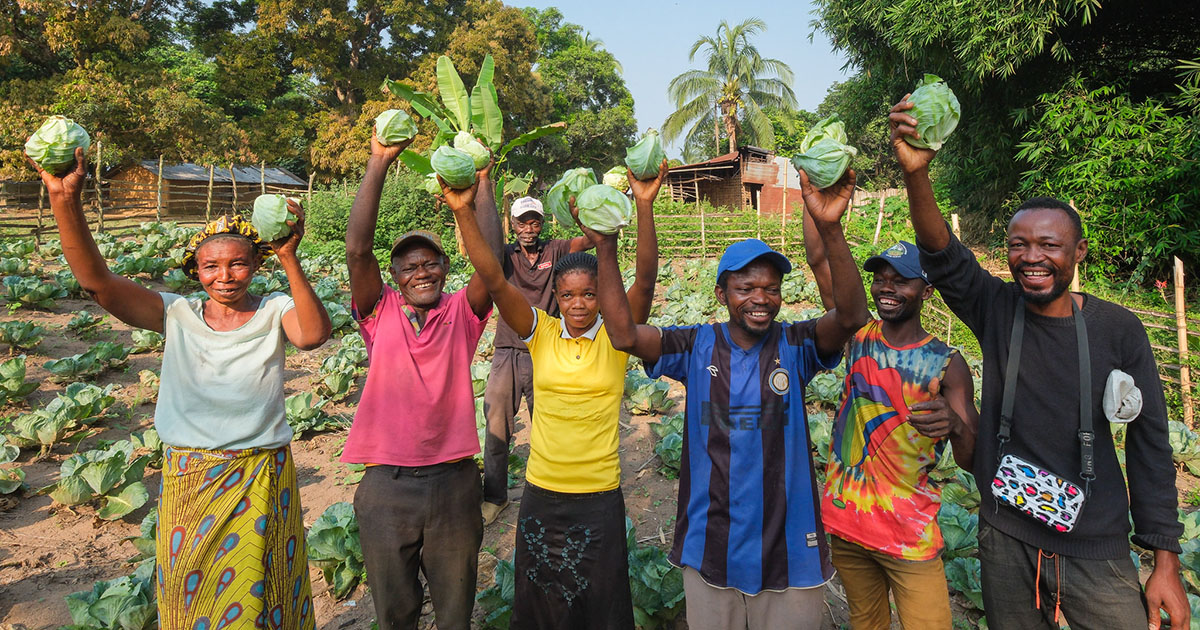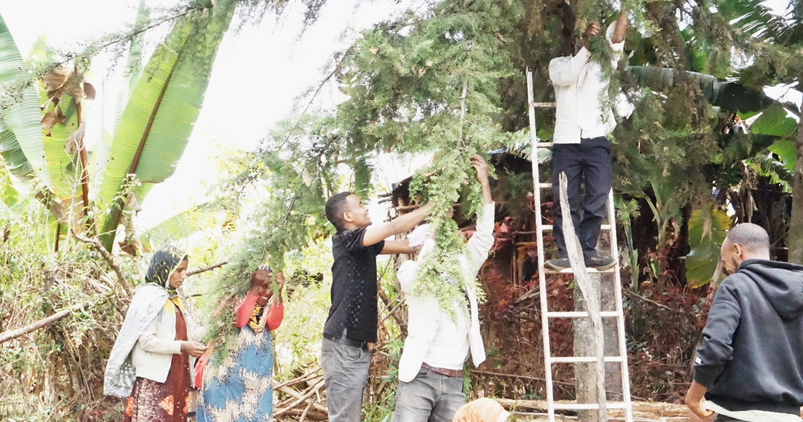Cropping is responsible for substantial emissions of greenhouse gasses (GHGs) worldwide through the use of fertilizers and through expansion of agricultural land and associated carbon losses. Especially in sub-Saharan Africa (SSA), GHG emissions from these processes might increase steeply in coming decades, due to tripling demand for food until 2050 to match the steep population growth. This study assesses the impact of achieving cereal self-sufficiency by the year 2050 for 10 SSA countries on GHG emissions related to different scenarios of increasing cereal production, ranging from intensifying production to agricultural area expansion. We also assessed different nutrient management variants in the intensification. Our analysis revealed that irrespective of intensification or extensification, GHG emissions of the 10 countries jointly are at least 50% higher in 2050 than in 2015. Intensification will come, depending on the nutrient use efficiency achieved, with large increases in nutrient inputs and associated GHG emissions. However, matching food demand through conversion of forest and grasslands to cereal area likely results in much higher GHG emissions. Moreover, many countries lack enough suitable land for cereal expansion to match food demand. In addition, we analysed the uncertainty in our GHG estimates and found that it is caused primarily by uncertainty in the IPCC Tier 1 coefficient for direct N2O emissions, and by the agronomic nitrogen use efficiency (N-AE). In conclusion, intensification scenarios are clearly superior to expansion scenarios in terms of climate change mitigation, but only if current N-AE is increased to levels commonly achieved in, for example, the United States, and which have been demonstrated to be feasible in some locations in SSA. As such, intensifying cereal production with good agronomy and nutrient management is essential to moderate inevitable increases in GHG emissions. Sustainably increasing crop production in SSA is therefore a daunting challenge in the coming decades.
Download:
DOI:
https://doi.org/10.1111/gcb.14783
Dimensions Citation Count:

Publication year
2019
Authors
van Loon, M.P.; Hijbeek, R.; ten Berge, H.F.M.; de Sy, V.; ten Broeke, G.A.; Solomon, D.; van Ittersum, M.K.
Language
English
Keywords
crop production, greenhouse gases, emission, food security
Geographic
Burkina Faso, Mali, Ghana, Kenya, Ethiopia, Niger, Nigeria, Zambia, Tanzania, Uganda
























